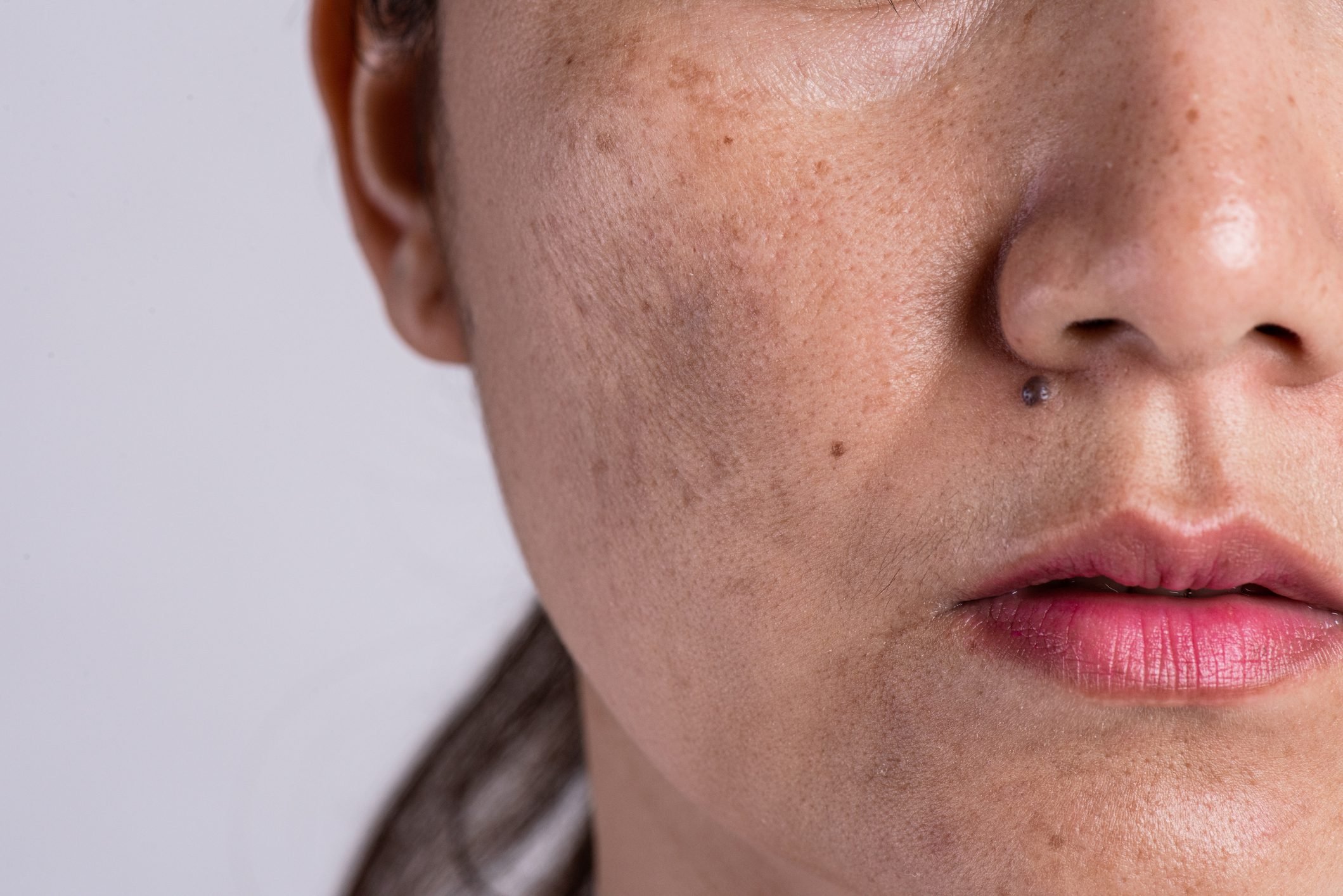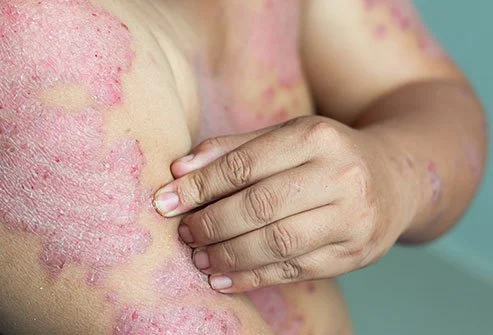Zits – they’re a part of life. But what’s the real kicker? Hyperpigmentation. Whether it’s from acne scars, too much sun exposure or even stress, dark spots from hyperpigmentation can leave marks on your skin that can linger for months or even years. If you’ve ever experienced discoloration, you know it doesn’t go away as easily as a little unfriendly zit here and there. Sure, it can be frustrating, but all hope isn’t lost. With a consistent skincare ritual and the right products, you can fade your dark spots over time and even prevent them from showing up in the future.
What is Hyperpigmentation?
Hyperpigmentation describes an increase in pigment, a.k.a. melanin, in our skin. Not only is it an increase in pigment, but it’s an overproduction of the pigment that gives our skin a darker color in some spots. Melanin, which gives skin its color, is produced by skin cells called melanocytes, and several different factors can alter the production of melanin in our bodies.
Some people also refer to this as discoloration since the patches of skin look darker than the skin around it. The discoloration is not only limited to our faces, though, as skin hyperpigmentation can also affect the entire body, cover large areas of our bodies, or even manifest in small patches on our skin from smaller irritants or injuries.
Though hyperpigmentation is usually harmless, it can affect any skin type and show up in many different forms. For example, freckles, birthmarks, melasma, rosacea, age spots/liver spots, acne scars, spots leftover from bug bites, and sunspots are all various ways that hyperpigmentation can manifest on the skin.
What Causes Hyperpigmentation?
There’s not one clear-cut story when it comes to hyperpigmentation – it can be caused for a few reasons. For instance, certain medications, changing hormone levels, and even some rare conditions can all cause hyperpigmentation in the skin. Mainly, hyperpigmentation and dark spots commonly show up as a leftover result of acne, hormone fluctuations, and sun damage. So, let’s break it down:
- Acne Scars and Post-Inflammatory Hyperpigmentation: After we treat a zit, that’s only half the battle. Sometimes, acne can leave a dark spot behind due to post-inflammatory hyperpigmentation, or PIH. When injury or inflammation occurs, the skin’s pigment production rises and produces more melanin in that area. Besides acne, PIH can also be caused by psoriasis, eczema, dermatitis, burns, allergic reactions, bug bites, skin-picking, or anything that can irritate your skin.
- Melasma: Melasma, also referred to as ‘pregnancy mask’, typically shows up in the form of brown or gray irregularly-shaped patches of skin on the stomach and face. This type of hyperpigmentation is caused by hormonal changes and stress, so it can often feel unpreventable. In comparison to acne scars or PIH marks, melasma usually shows up in larger patches, but you don’t have to lose faith when it comes to treating it.
- Sun Damage: Not only can sun damage itself present as hyperpigmentation, but too much sun exposure can also make PIH marks and melasma worse. Without protecting the skin, sun exposure can make hyperpigmentation appear darker, or sun spots and age spots can show up on the skin as a result of increased melanin production. Since they’re related to excess sun exposure, sunspots generally appear on any area of the skin that is commonly exposed to the sun, like the hands and face. What’s the main takeaway from all of this? Wear that SPF!
How Can You Treat It?
Even though hyperpigmentation is sometimes hard to reach because it’s trapped in the epidermis or dermis, you don’t have to wave your white flag yet. That’s right – it’s possible to treat or fade your dark spots. Here’s how:
- Topical Depigmenting Agents: If you’re familiar with Skincare by Hyram on YouTube, then you’ve probably heard him raving about niacinamide – and he’s right on the money. This is one of the most common effective ingredients when it comes to fading dark spots because it contains a vitamin B3 derivative that blocks pigment from presenting to our skin cells that help make up the epidermis. Besides niacinamide, there are other topical agents you can look for in your skincare products, such as azelaic acid and licorice root extract. These ingredients work against hyperpigmentation by inhibiting tyrosinase, which is the enzyme that is essential for the formation of the pigment melanin.
- Vitamin C: Other than the ingredients mentioned above, you can also look for skincare products containing ascorbic acid, or vitamin C. Similar to azelaic acid and licorice root extract, vitamin C can also block tyrosinase. By helping your skin produce more collagen and impeding melanin production, vitamin C will help fade dark spots over time as long as you’re consistent with your products and continue to protect your skin from sun exposure. Depending on how dark the spot is compared to the surrounding skin, the length of time it will take you to fade your spots varies but staying persistent with your skincare will give you significant results. In other words, stick to that skincare ritual!
- Exfoliation: If exfoliating isn’t already a part of your skincare ritual, it’s time to start. There are two different types of exfoliation – chemical and physical – but no matter which you decide to go with, you’ll notice it helps you shed old layers of dead skin cells. This way, you can make room for fresh new cells and break up the pigmented cells to allow them to fade over time. But, remember: don’t overdo it. Especially if your skin isn’t used to regular exfoliation, try exfoliation once a week instead of multiple times a week. As an added bonus, you can also combine topical depigmenting agents with your exfoliation ritual for even better results.
Final Thoughts
Hyperpigmentation can be a pain to deal with, but you don’t have to throw in the towel. Whether you’re dealing with acne scars, PIH marks, melasma, or sunspots, just remember that they’re treatable as long as you know which ingredients and methods to work with. Stay patient – you got this!





